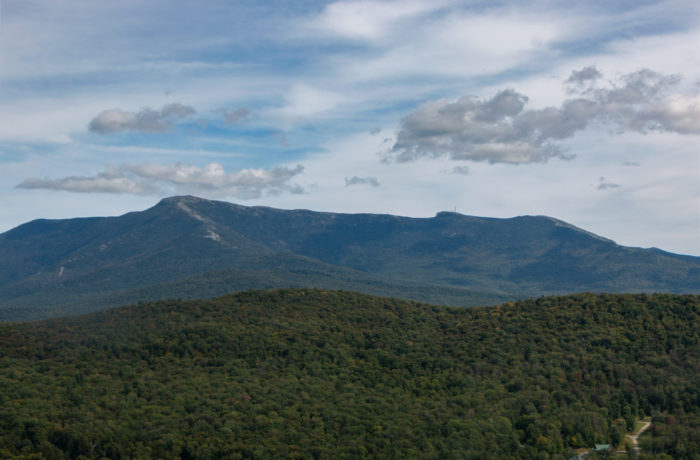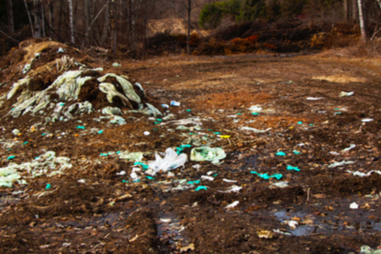By Jack Caron
When people think of Vermont, many idyllic images and scenes may come to mind. One motif that the Green Mountain State may not traditionally evoke, however, is a science-fiction-esque city of the future. What many people may not know about the city of Winooski, just outside of Burlington, is that the entire city was almost covered by a large dome in 1979.
After the shutdown of Winooski’s wool mills in the 60s, the city needed a way to keep up with rapidly advancing technology to stabilize the local economy. Mark Tigan, the young director of urban development and planning, proposed an idea that was, as the saying goes, so crazy it just might work. To drastically reduce the amount of money the city spends on heat and energy in the long winter months, Tigan proposed that a large dome be built over the entire city to keep control of the climate.

At the time of the proposed dome project, Winooski was the second most federally funded city in the nation per capita. As a result, the government was more open to new ideas to try out if it meant potentially less money being given to the city. When Tigan projected that the dome may save the city up to 90 percent on the money it spends on heating annually, it seemed less outlandish and more intriguing.
This intrigue was the major driving force in the success and longevity of this project. After the idea was written about in the local newspaper, letters from supporters and science-fiction enthusiasts began pouring in. People wanted to see a real-life domed-city here in the United States. The fans’ excitement about the project propelled it through feasibility tests in Washington and the idea continued to blossom into a fully-fledged plan.
The pinnacle of this increasing tangibility was the International Dome Symposium of 1980, which was held at St. Michael’s College itself. World famous architect Buckminster Fuller was heavily involved throughout the reports presented in the symposium.
In a book titled Proceedings of the 1980 International Dome Symposium which can be found at St. Michael’s College’s Library, there is a welcome address entitled “Colleges too should experiment with domes.” The address was written by then president of St. Michael’s College Edward L. Henry.In his address he writes that St. Michael’s is proud to host and co-sponsor the dome symposium as a part of the college’s 75th anniversary celebration. The former president goes on to discuss how “doming” college campuses should be something the country should look to in the near future. “Energy conservation is very important to private colleges especially, and a dome may just be the perfect solution.” Henry added.
“Proceedings of the 1980 International Dome Symposium” is a goldmine of information on radical architecture, specifically giant domes and other secondary envelopes. In addition to the history of large dome structures and many examples of potential building processes worldwide, the book includes the entirety of A Domed Community and Several Alternatives for Winooski, Vermont which is an oral presentation given at the Symposium on campus by Robert L. Wendt on the potential issues of the dome. In order to fully explore all possible repercussions of the domed city, the report details potential issues the Winooski community might face. The report lists environmental issues in categories such as climate, disease control, noise, inside air quality, odors, social issues, regional impacts and more.
The report also provides potential alternatives to save money without a dome such as weatherizing existing homes and lists estimated prices for the other options. Other potential alternatives were things such as an interconnected community of smaller domes and an underground earth-shelter city dug out of hillsides. Despite many provided alternatives, the researchers listed in the reports agreed that a large dome would be the best for the city.

Tigan closes out the book with concluding remarks in which he acknowledges that the reports given in the symposium were not unbiased but rather biased in favor of the dome. This is why so much attention was put into trying to disprove the plausibility of the idea. He cites a plan from the late 1950s in which downtown Manhattan would be placed under a dome that would pay for itself in saving the cost of plowing and snow removal. Tigan says that he and his supporters will ask for funds to push the project through a DC feasibility study. The symposium may not have lead to an outright consensus on dome support, but the issues and ideas raised around the issue of energy conservation and creative solutions therein have made the symposium a success.
Such a seemingly far-fetched idea for a future was at one time a very real and plausible solution to a struggling city. This obscure history is very thoroughly intertwined with the history of St. Michael’s College. In an attempt to be reelected in the 1980 presidential election, Jimmy Carter cut funding for the project and then lost. If not for this late decision, students at St. Michael’s very well might have been living under a climate-controlled dome today as part of the city of the future.


